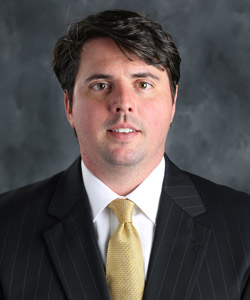Debbie asks: Why the radical change to the OT format (seven minute period, 4-on-4 until the first stoppage after the three-minute mark and 3-on-3 for the remainder with a three-round shootout to follow, if necessary)?
Wilkinson: Simply put, too many games were being decided in the shootout and it is a trend that continues to rise. Twenty-five percent of AHL games went to OT and 16 percent of AHL games went to the shootout.

Wilkinson
@ChasingCheckers asks if the OT format was a request from the NHL to test on their behalf.
Wilkinson: In this case, no it wasn't. We, the AHL, have in the past been a testing ground for new rules and concepts but this was not one of them. Bill Daly from the NHL was in attendance when we voted it through the Board of Governors, was very supportive of the format and stated that they will keep a close eye on the results, but he made no indication that the NHL would go to this new format at this time.
Gary asks: Will there be an ice cut before the shootout as well as after regulation?
Wilkinson: No. A full dry scrape will happen at end of regulation. The three-man shootout will take place immediately following OT.
Alan asks: How do penalties work in OT when 3-on-3 occurs?
Wilkinson: Just like in regulation, a team will never skate with less than three players on the ice. Therefore, a penalty in 3-on-3 would become 4-on-3 or 5-on-3 if necessary. Teams could then potentially play 4-on-4 or even 5-on-5 until the first whistle after the penalties expire.
Marcel, and several others, have asked about the reason behind the fighting rule (a player who fights twice in the same game will receive an automatic game misconduct).
Wilkinson: We do not want to take fighting out of the game. We all believe there is important place in the game for it. What we are hoping the rule does is start to get the few players who engage in what we determine are "meaningless" fights or fights that don't impact the momentum of the game and get those out of our game. Only around 70 games league-wide had situations where a player fought more than twice, so this rule won't impact what most of us like to see in hard-played games.
Mark asks: Is there any concern with players trying to take or rip the helmet off of an opponent with the new helmet rule (a player on the ice whose helmet comes off during play will earn a minor penalty unless he immediately exits the playing surface or puts the helmet back on with the chin strap properly fastened)?
Wilkinson: The committee did not feel that this would be an issue. We feel that if players are wearing the appropriate sized helmet with it properly fastened, the likelihood of it coming off in any fashion becomes very minimal.
